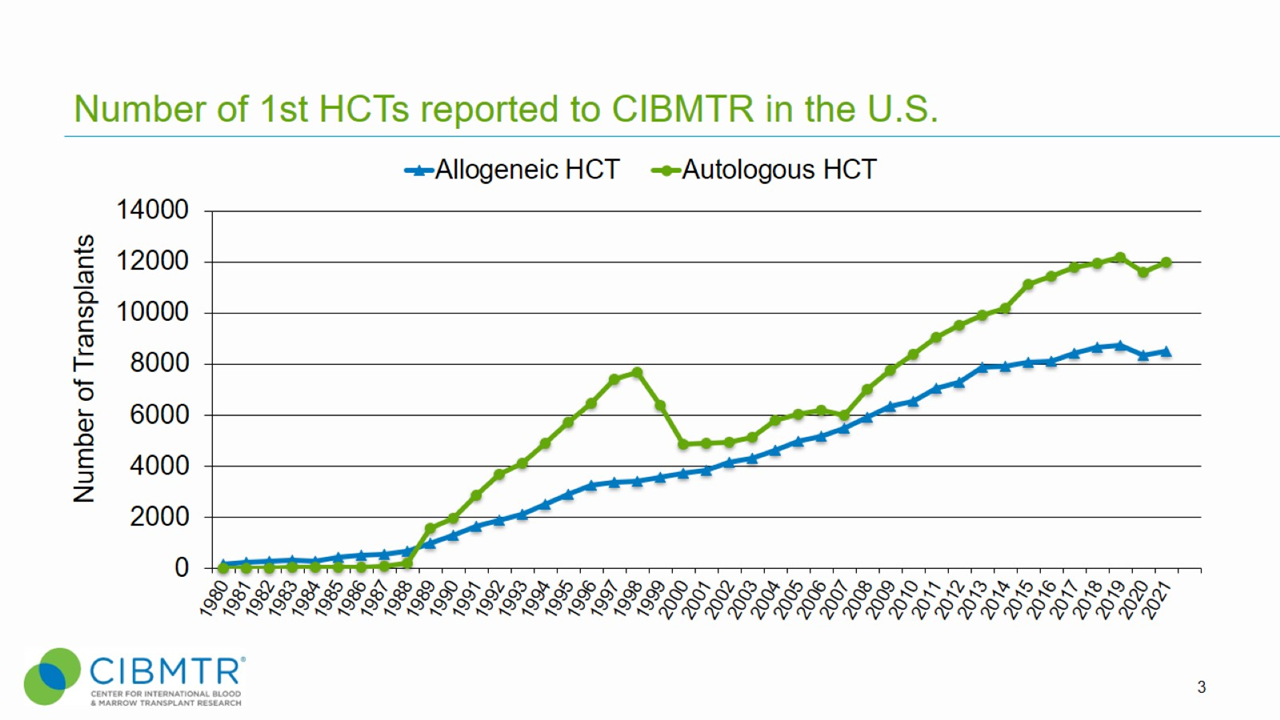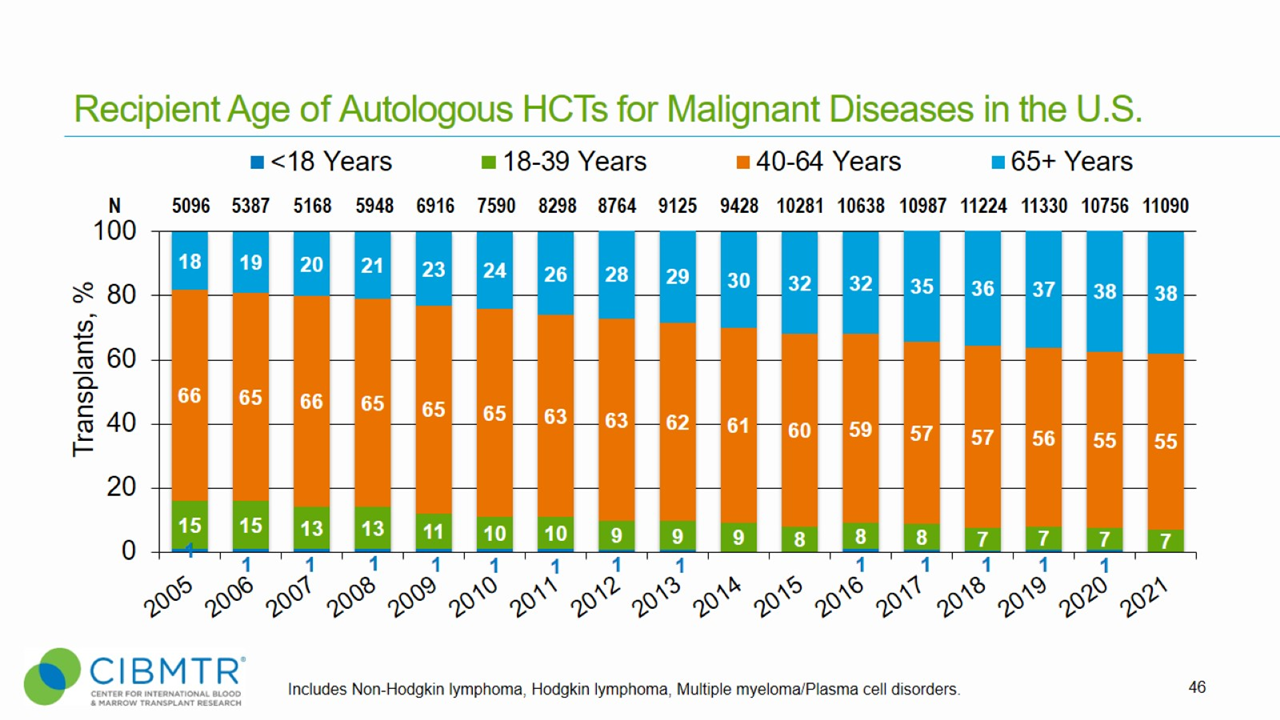Disease-Specific HCT Indications and Outcomes Data
New outcomes data and research has defined which patients can benefit from hematopoietic cell transplant (HCT) and when this therapy is best applied. HCT offers a potential cure for blood cancers, such as leukemia and lymphoma, and other life-threatening diseases.
HCT Data Trends
Overall volume trends and indications for transplantation are presented in the figures below. The data show autologous and allogeneic HCT volume, age trends and disease indications for transplant.
Data in this section have been prepared by the CIBMTR® (Center for International Blood and Marrow Transplant Research®). The CIBMTR is a research collaboration between the National Marrow Donor Program® (NMDP)/Be The Match® and the Medical College of Wisconsin.
Figure 1. Volume Trend of Allogeneic and Autologous HCT 
Figure 2. Volume of Allogeneic HCT by Disease Type
.png)
Figure 3. Age Trend of Allogeneic HCT

Figure 4. Age Trend of Autologous HCT

HCT Consultation Timing Guidelines
The National Marrow Donor Program® (NMDP)/Be The Match® and the American Society for Transplantation and Cellular Therapy (ASTCT) have jointly developed guidelines for transplant consultation and referral timing based on disease characteristics. [1] The National Comprehensive Cancer Network Clinical Practice Guidelines (NCCN Guidelines®) were consulted when developing these guidelines and are a valuable tool for determining risk stratification. [2]
Our guidelines highlight disease categories that include patients at risk for disease progression and who should be referred for a consultation for autologous or allogeneic transplantation.
View the complete HCT Consultation Timing Guidelines
Outcomes and Indications by Disease
Access current research, outcomes and HCT Consultation Timing Guidelines below to support your clinical decision-making.
Leukemia and Myelodysplasia
- Acute Myeloid Leukemia (AML) - Adult
- Acute Myeloid Leukemia (AML) - Pediatric
- Acute Lymphoblastic Leukemia (ALL) - Adult
- Acute Lymphoblastic Leukemia (ALL) - Pediatric
- Myelodysplastic Syndromes (MDS)
- Chronic Myeloid Leukemia (CML)
- Chronic Lymphocytic Leukemia (CLL)
Lymphomas and Multiple Myeloma
- Non-Hodgkin Lymphoma (NHL)
- Hodgkin Lymphoma (HL)
- Multiple Myeloma (MM) and Other Plasma Cell Disorders
Non-Malignant Disorders and Other Diseases
- Severe Aplastic Anemia (SAA) and Other Marrow Failure Syndromes
- Sickle Cell Disease (SCD)
- Thalassemia
- Immune Deficiency Diseases
- Inherited Metabolic Disorders
- Myeloproliferative Neoplasms (MPN)
- Other Diseases
Clinical Trials Search and Support
The NMDP/Be The Match offers the Be The Match® Jason Carter Clinical Trials Search and Support (CTSS) program, which can provide clinical trial navigation to your patients. The CTSS Program was created to help people with blood cancers or blood disorders and their families find and join clinical trials.
For more information, visit Clinical Trials Search and Support.
References
- NMDP/Be The Match and ASTCT Recommended Timing for Transplant Consultation. Download (PDF)
- National Comprehensive Cancer Network. NCCN Guidelines. 2023. Access